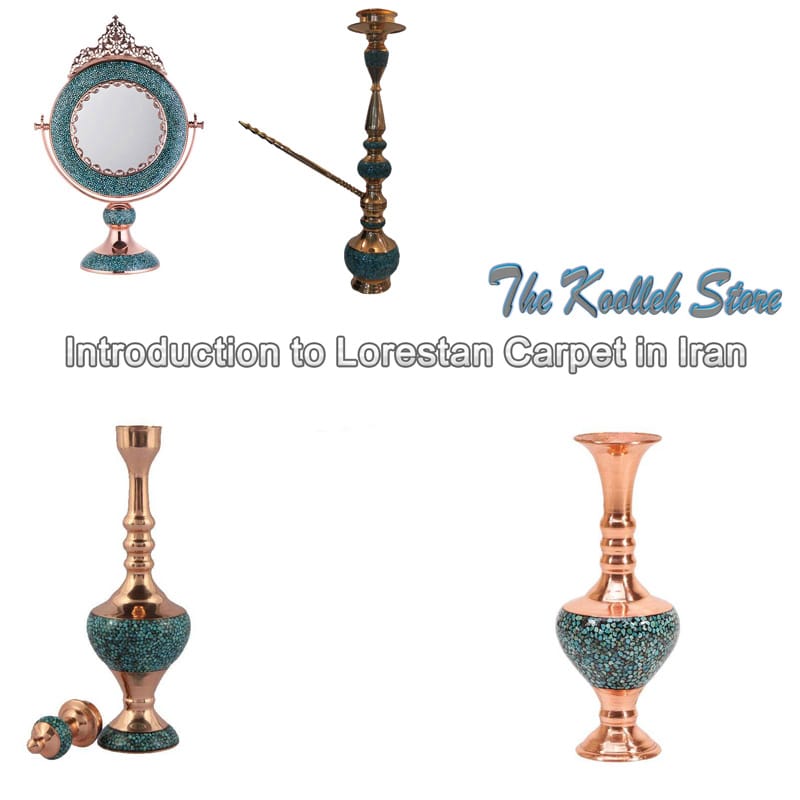Introduction to Lorestan Carpet in Iran

Lorestan is a provincial name in the western part of Iran with an area of 28064 square kilometers, or 7/1% of the total area of the country, which has been named after its inhabitants, the various tribes of Lor. This area has been a favorite of ranchers for a long time with rangelands and there is historical evidence that livestock employment has expanded and prospered in the area.
Today, various tribes in the area still make a living through farming, which is their primary occupation.
Livestock breeding has many benefits to the nomads that in addition to providing for their livelihoods they use meat, milk, wool, hair and so on. For example, their black tents are woven from goat hair, which is actually a kind of tissue without Node.
Historical evidence suggests that in this line of sheep’s wool, goat’s hair and cotton were the raw materials for knitting. But it appears to have been sourced from other areas because of the lack of cotton grown in the area.
Structure
Larry handmade carpets are available not only in the center of Lorestan province but also in neighboring markets such as Hamedan, Arak, Isfahan and Kermanshah. These carpets, although simple and unmatched in design, are more rugged and primitive than other carpet designs. For example, the Kurdish and Lori designs are very similar in quality, but in nomadic areas, despite low production. One cannot see the elegance of urban weaving carpets. But in return for simple and often beautiful designs often depicted in geometrical shards and broken branches, they have found loyal fans among European architects and decorators.
On the other hand, the textures and carpet designs are more or less the same across the various Lur’s tribes, and their carpets are often woven using thick, natural colors. The texture of special rugs called Gabbeh is one of the characteristics of carpet weaving in these regions. Lorries are mostly small in size, although some areas have larger specimens.
For example, among the lorries resident in Nasrabad, Esfahan, we can mention the sizes that are woven into the curtain dimensions.
Larry carpets are made of sheep and goat wool and knot carpets, according to different Persian and sometimes Turkish weaving traditions.
Common designs
Larry’s designs are so varied that the weavers created them with the help of their creative minds and created a world of beauty with the variety of colors they chose.
The straight lines of the geometrical lines along the long limbs take on a curved shape, and with a tangle of patterns, the carpets take on a salty state.
Color
In short, the wools in the aforementioned areas are mostly seen in colors such as red, blue, indigo, beige, white, peach, purple and green.
Dyeing
Our knowledge of the dyeing method in Lorestan is poor, but Filberg (1952) writes that wool yarns were soaked in doogh in early summer to prepare for dyeing. The laurels used the leaves of the trees, urea and indigo (the indigo was obtained from the blue indigo bushes) as colored substances. In the carpets and weaves of Lorestan brought to Denmark, many shades of red, blue and yellow are used.
They were made from sources such as red grains for red and rhubarb, which produced red tint, saffron stigma or pomegranate peel, for saffron or yellow, and from Iranian grape or berry fruits. In this regard, the bright and attractive green color, especially in the carpets of the first half of the twentieth century of Lorestan, draws attention to the fact that it may have been obtained by twice dying or refining the yellow thread in the Nile. . In the past, dyeing was purely herbal and natural, and it was also popular.
Dimensions
The Lur nomads have a keen interest in adhering to the traditions and traditions of the day and catering to daily needs or confusion about the texture of very small knotted rugs, horses, sachets, salt sacks, etc. They also attach great importance to carpet weaving. Their carpets are very similar to the Qashqai tribe in terms of shape, size and weaving methods. Typically, the size of the rugs rarely exceeds 5/120/2 m.
current situation
With all the descriptions of Larry carpets, today the carpets that are woven in Lorestan are the most common carpets throughout the country. Most of the maps, materials and tools are drawn from neighboring cities especially Arak, Isfahan and Kashan. But in certain areas of the province, around Boroujerd and Alashtar and some villages in northern Lorestan, native carpets are sometimes woven, but very few and even few.
